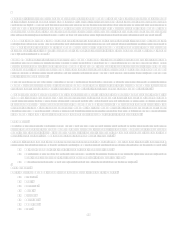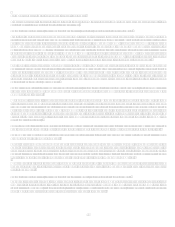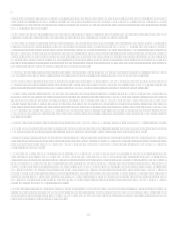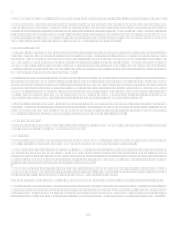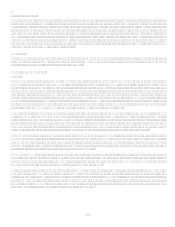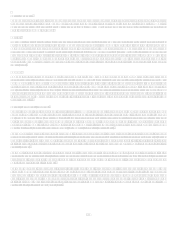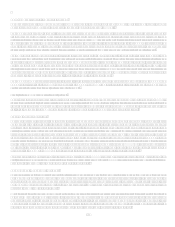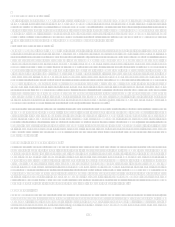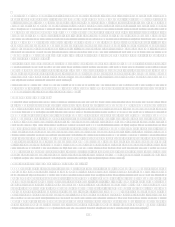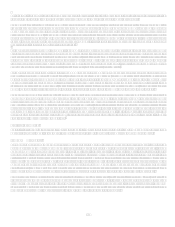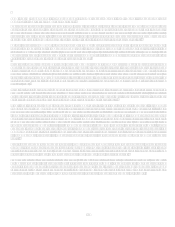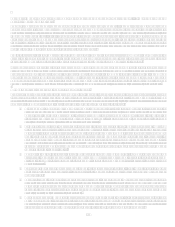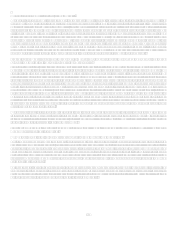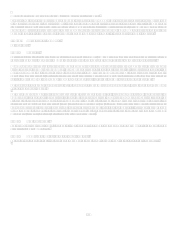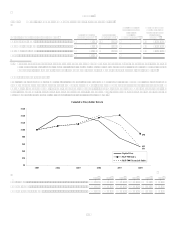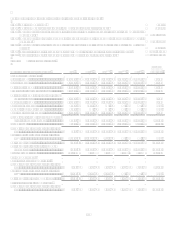Capital One 2008 Annual Report Download - page 35
Download and view the complete annual report
Please find page 35 of the 2008 Capital One annual report below. You can navigate through the pages in the report by either clicking on the pages listed below, or by using the keyword search tool below to find specific information within the annual report. 17
Under the EESA the Company is subject to increased Congressional scrutiny, including participating in Congressional hearings and
investigations and providing reports to the Treasury Department and the Government Accountability Office (GAO) as well as other
entities created under the EESA to provide additional oversight. Congress has shown a strong interest in directing how the monies and
programs under the EESA are managed. To this end, the U.S. House of Representatives has passed legislation addressing a number of
terms of the EESA and a number of hearings have been scheduled. Recently Congress passed, and the President signed into law, the
American Recovery and Reinvestment Act (ARRA), which, among other things, includes additional restrictions for participants in
programs under the EESA. Such restrictions include limitations on hiring workers under the H1-B visa program and compliance with
new standards to be adopted by the U.S. Treasury relating to the executive compensation practices of participants in programs under
the TARP. The ARRA also includes provisions that would allow the Company to redeem the Series A Preferred Stock that it issued to
the U.S. Treasury under the CPP using proceeds other than those received from a qualified equity offering under certain
circumstances and with regulator approval. In addition, it is expected that provisions related to mortgage loans and modifications are
likely to be forthcoming. For additional information regarding the Companys participation in the CPP please see Section V,
Management Summary and Business Outlook, and Item 8, Financial Statements and Supplementary Data Notes to the Consolidated
Financial Statements Note 10.
Finally, there have been several proposals in Congress to modify the bankruptcy laws to permit homeowners at risk of foreclosure to
modify their primary mortgages. On October 20, 2008, the President signed the National Guard and Reservists Debt Relief Act of
2008, making bankruptcy filings easier for national guardsmen and reservists. Broad bankruptcy legislation also has been introduced
in 2009 that could be seen as creating incentives for consumers to choose Chapter 13 bankruptcy as a primary remedy for mortgage
related problems, which could lead to an increase in bankruptcy filings. This legislation passed the U.S. House in February and now
heads to the U.S. Senate for possible consideration.
Please see Compliance With New and Existing Laws and Regulations May Increase Our Costs, Limit Our Ability To Pursue
Business Opportunities, And Increase Compliance Challenges under Item 1A. Risk Factors for a discussion of the risks posed to the
Company as a result of the current legislative environment.
Sarbanes-Oxley Act Compliance
On July 30, 2002, the Sarbanes-Oxley Act of 2002 (the Sarbanes-Oxley Act) was passed into law. The Sarbanes-Oxley Act applies
to all companies that are required to file periodic reports with the Securities and Exchange Commission (SEC) and contains a
number of significant changes relating to the responsibilities of directors and officers and reporting and governance obligations of
SEC reporting companies. In addition, the Sarbanes-Oxley Act also created the Public Company Accounting Oversight Board (the
PCAOB), a private sector, non-profit corporation whose mission is to oversee the auditors of public companies. The PCAOB
recommends rulemaking to the SEC and sets certain standards for the auditors which it oversees. Since the passage of the Sarbanes-
Oxley Act, we have taken a variety of steps that we believe place us in substantial compliance with the effective provisions of the
Sarbanes-Oxley Act. We continue to monitor SEC rulemaking and PCAOB activities to determine if additional changes are needed to
comply with provisions that may become effective in the future. Furthermore, our management has supervised the design of, or has
designed, internal controls and procedures to provide reasonable assurances regarding the reliability of its financial reporting and
disclosure controls and procedures to ensure that material information regarding the Company is made known to them, particularly
during the period in which this Annual Report on Form 10-K is being prepared and has evaluated the effectiveness of those controls as
more fully set forth in Controls and Procedures below. We have, in compliance with Section 404 of the Sarbanes-Oxley Act,
certified, in connection with this Annual Report on Form 10-K, that we did not discover, during the execution of our internal control
processes, any material weaknesses. In addition, our management policy is to disclose to our auditors and the Audit and Risk
Committee of the Board of Directors significant deficiencies, if any, in the design or operation of our internal control over financial
reporting that are reasonably likely to adversely affect our ability to record, process, summarize and report financial information, as
well as any fraud, whether or not material, by those that have a significant role in these processes.
Regulation of International Business by Non - U.S. Authorities
COBNA faces regulation in foreign jurisdictions where it currently operates. In the United Kingdom, COBNA operates through the
U.K. Bank, which was established in 2000. The U.K. Bank is regulated by the Financial Services Authority (FSA) and licensed by
the Office of Fair Trading (OFT). The U.K. Bank is an authorized deposit taker and thus is able to take consumer deposits in the
U.K. The U.K. Bank also has been granted a full license by the OFT to issue consumer credit under the U.K.s Consumer Credit Act.
The FSA requires the U.K. Bank to maintain certain regulatory capital ratios at all times, and it may modify those requirements at any
time. Effective January 1, 2008, the U.K. Bank has become subject to new capital adequacy requirements implemented by the FSA as
a result of the U.K.s adoption of the European Capital Requirements Directive, itself an implementation of the Basel II Accord. The
U.K. Bank obtains capital through earnings or through additional capital infusion from COBNA, subject to approval under Regulation
K of the rules administered by the Federal Reserve. If the U.K. Bank is unable to generate or maintain sufficient capital on favorable
terms, it may choose to restrict its growth to reduce the regulatory capital required. Following the introduction of the Capital
Requirements Directive, the U.K. Bank continues to have a capital surplus and the impact of the new capital regime has been fully
factored into the U.K. Banks financial and capital planning. In addition, the U.K. Bank is limited by the U.K. Companies Act in its
distribution of dividends to COBNA in that dividends may only be paid out of the U.K. Banks distributable profits.


